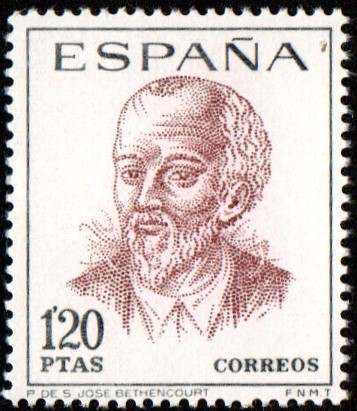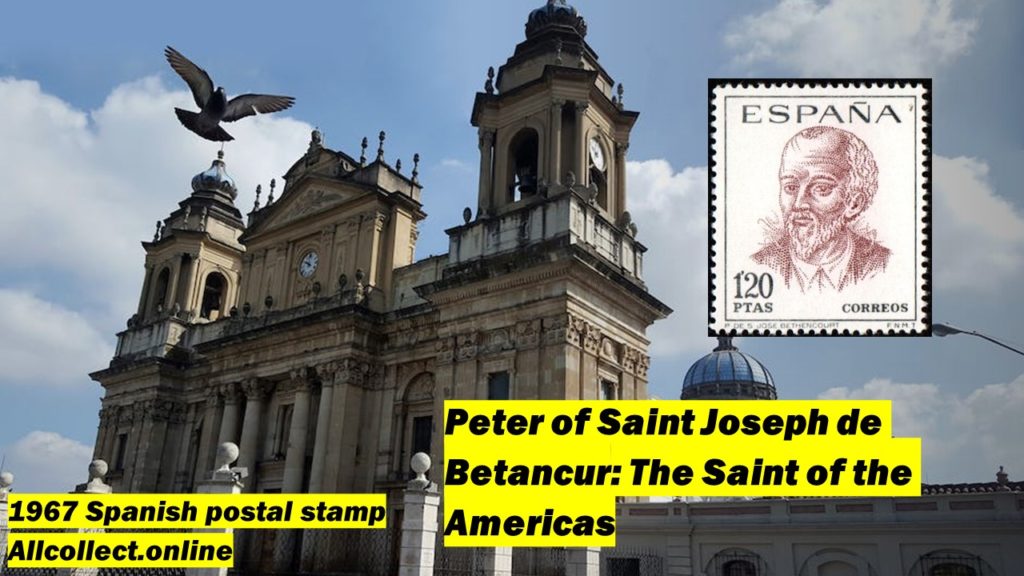In the annals of Central American history and spirituality, few figures shine as brightly as Peter of Saint Joseph de Betancur, commonly known as Hermano Pedro. Born in 1626 in Vilaflor, Tenerife, Canary Islands, his journey from humble beginnings to sainthood is a remarkable tale of compassion, commitment, and miracles.

The Life of Hermano Pedro
From a young age, Hermano Pedro felt a deep spiritual calling. Leaving behind the Canary Islands, he traveled to the New World, settling in what is now Antigua Guatemala. While initially aspiring to priesthood, his lack of formal education led him to the Secular Franciscan Order. This twist of fate allowed him to embark on a mission of profound charity. He dedicated his life to the service of the poor, the sick, and the marginalized, establishing hospitals, shelters, and schools in the city.
Founder of Order of Our Lady of Bethlehem
In addition to his charitable endeavors, Hermano Pedro’s spiritual legacy also includes the foundation of the Order of Our Lady of Bethlehem in 1653. This order, known for its charitable and healthcare initiatives, was instrumental in the establishment of hospitals, shelters, and schools throughout the region. The members of this order, inspired by Hermano Pedro’s teachings and example, dedicated themselves to serving the sick, the needy, and the downtrodden. This order’s establishment solidified Hermano Pedro’s vision of a society rooted in compassion, service, and spiritual devotion.
Artistic Representations
Given his profound impact, it’s no surprise that Hermano Pedro’s likeness graces many churches and religious sites, especially in Guatemala. He is often depicted in paintings wearing the brown habit of the Franciscans. This simple attire, echoing humility, is contrasted by the radiant aura often painted around him, symbolizing his divine connection. In many portrayals, he is surrounded by indigenous people, the sick, or the poor, reflecting his life’s work and commitment. These paintings not only serve as devotional items but also as historical records, capturing the essence of a man who bridged the gap between divinity and humanity.
Miracles and Canonization
Hermano Pedro’s journey to sainthood is intricately linked with miracles. Even during his lifetime, he was associated with acts of divine intervention. The sick who came to his hospitals often left healed, not just of their physical ailments but also of their spiritual burdens. Tales of his ability to heal through prayer, provide comfort, and even perform acts that defied natural explanations spread throughout the region. After his death in 1667, his tomb became a pilgrimage site, with many visitors claiming miraculous cures or divine encounters.
However, the path to canonization is rigorous. It was only in the 20th century that the Vatican began to formally recognize the miracles associated with Hermano Pedro. Two miracles, in particular, were pivotal to his canonization. The first involved a young girl who, after suffering severe brain damage in an accident, was miraculously healed after prayers invoking Hermano Pedro’s intercession. The second miracle involved the inexplicable healing of a man suffering from a severe lung disease.
These miracles, verified by the Vatican, paved the way for Hermano Pedro’s beatification in 1980 by Pope John Paul II. Subsequently, in 2002, he was canonized, making him the first saint from Central America.
Legacy and Reverence
The canonization of Hermano Pedro was not just a recognition of his miracles but also of his enduring legacy of compassion, service, and faith. He stood as a beacon of hope in challenging times, channeling divine love to uplift the downtrodden.
In recognition of Hermano Pedro’s profound impact, in 1967, Spain issued a postage stamp dedicated to him. This stamp not only serves as a philatelic tribute but also as a testament to his lasting influence, bridging continents and cultures through his legacy of love and service.
In today’s world, where divisions often seem insurmountable, figures like Hermano Pedro remind us of the transformative power of love and service. Whether through paintings that capture his essence, miracles that testify to his divine connection, or the stories of his selfless service, Hermano Pedro continues to inspire, teaching us that sainthood is, at its core, an embodiment of pure, selfless love.

